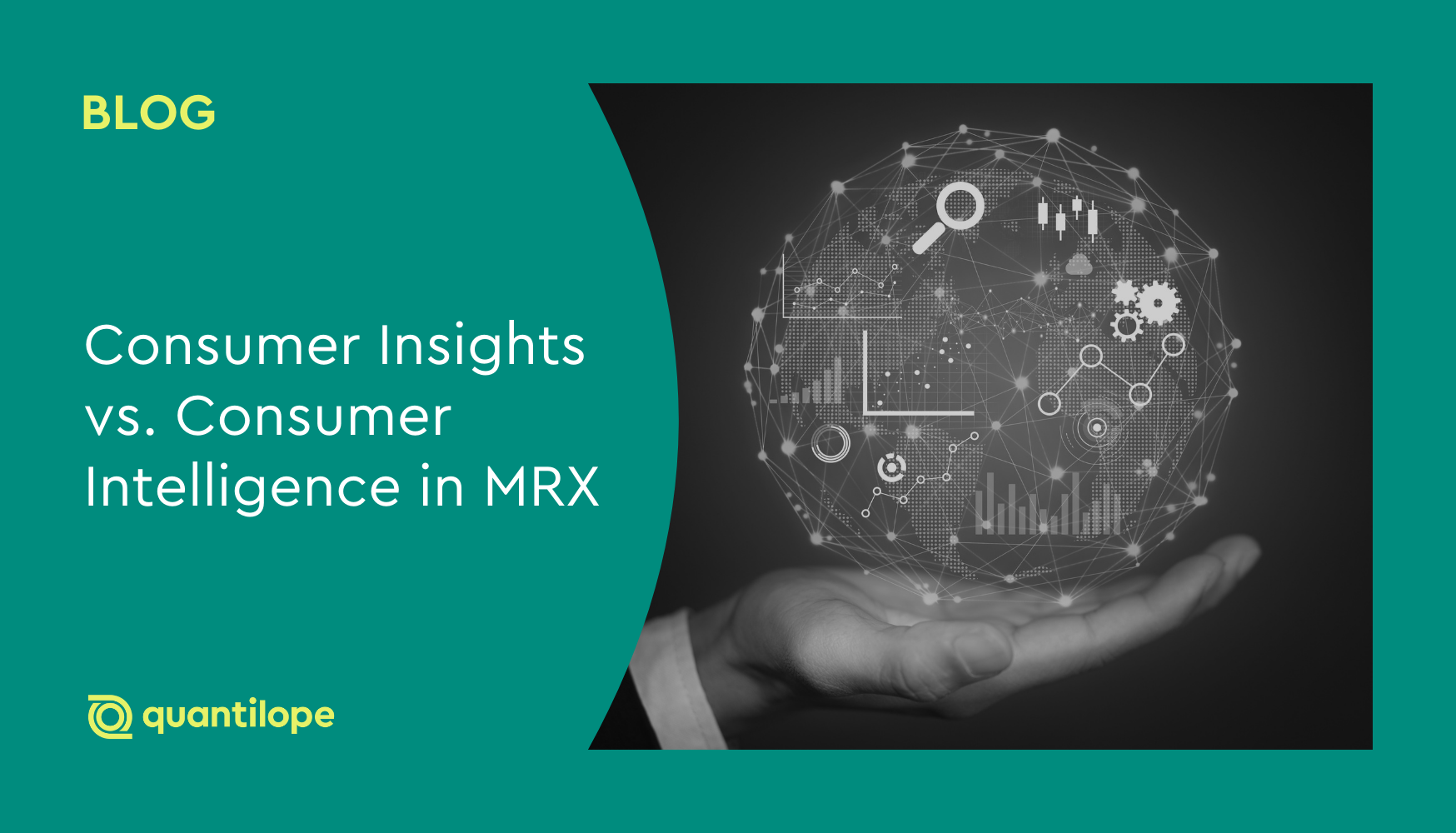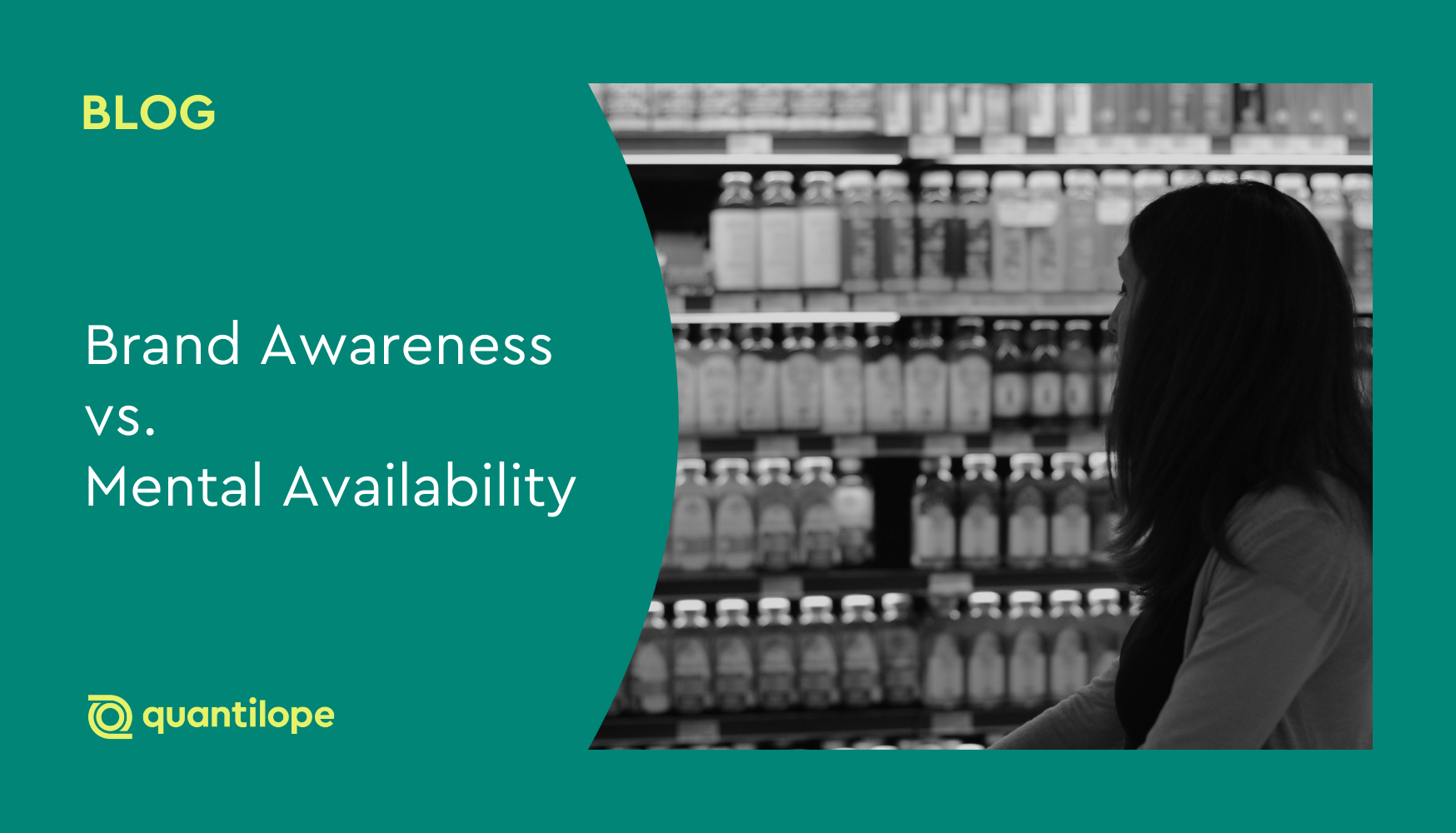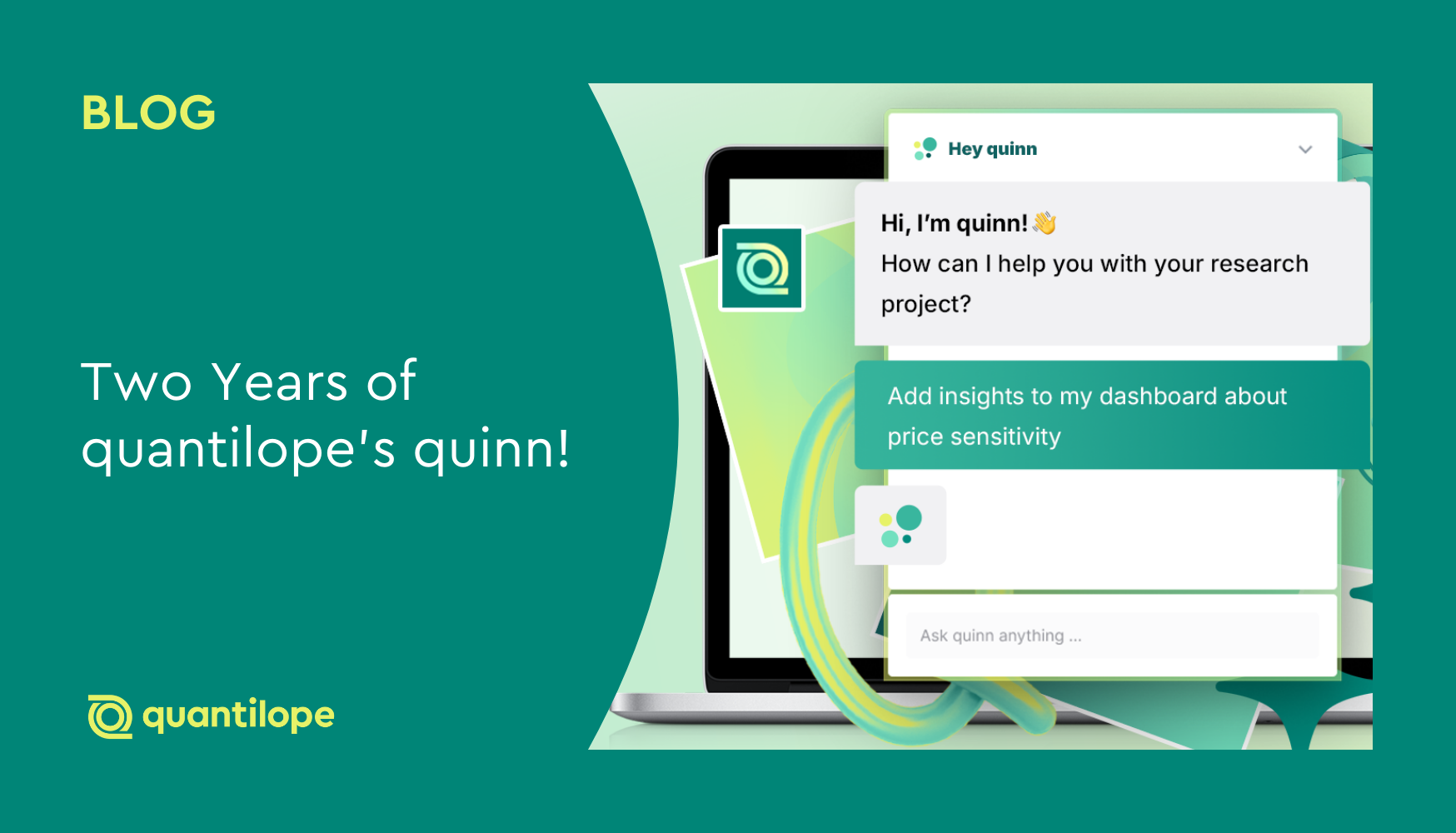The terms "Consumer Insights" and "Consumer Intelligence" are often used interchangeably in the market research space. However, as The Consumer Intelligence Platform, we know the two terms are not quite as comparable as some claim them to be. In this post, we dive into both elements of market research: Consumer Intelligence and Consumer Insights – exploring what each of them are, how they differ, and when both come into play as part of a research approach.
Table of Contents:
-
The Indispensable Synergy: How Consumer Insights Fuel Consumer Intelligence
- The quantilope Advantage: Bridging the Gap
What are Consumer Insights?
Consumer Insights are the specific findings that brands gain from their market research efforts. These are the quantifiable metrics, measurable facts, observable behaviors, and discernible patterns. They’re the data points that you navigate through when analyzing your market research results, such as:
-
Demographic Insights: The percentage of your customers falling within certain age brackets, gender identities, income levels, or geographic location
-
Behavioral Insights: The frequency of product usage, average purchase value, preferred channels for interaction, or specific actions taken on your website
-
Attitudinal Insights: The level of brand loyalty, perception of product quality, satisfaction scores, or willingness to recommend (Net Promoter Score; aka NPS)
-
Needs-Based Insights: Specific pain points expressed by customers, desired features for a new product, or unmet needs in the current market landscape
-
Competitive Insights: The reasons why consumers choose a competitor, their perceptions of rival brands, or areas where your offerings fall short
Consumer Insights describe what you gather from a market research survey, a focus group, social listening, or any other data collection method. They are the raw measurements and observations that feed directly into the broader narrative of Consumer Intelligence.
Back to Table of Contents
What is Consumer Intelligence?
Consumer Intelligence at quantilope describes the overall understanding brands have of their current and prospective consumers, thanks to their comprehensive market research strategy. It’s the overall customer story that helps brands make strategic business decisions - such as who their consumers are beyond basic characteristics, why they buy what they do, and how they make certain decisions. Think of Consumer Intelligence like a balloon’s exterior. It holds all the information (air) inside for a complete picture of an audience.
That air that goes inside? Those are consumer insights (like the ones mentioned above). Consumer Intelligence helps brands answer questions like:
- Who are our consumers? Beyond basic demographics, what are our consumers' psychographics, lifestyles, values, and motivations?
- Why do our consumers choose what they choose? What are our consumers' underlying drivers, emotional triggers, and rational considerations behind their purchasing behavior?
- How do our consumers navigate their decision-making journey? What are the touch points, influences, and stages our consumers go through before, during, and after a purchase?
- What are our consumers unmet needs and aspirations? What are the pain points, desires, and future trends that present opportunities for innovation and growth?
Consumer Intelligence isn't just about collecting data through Consumer Insights; it's about synthesizing, interpreting, and connecting disparate pieces of information to create actionable knowledge. It guides product development, marketing strategy, brand positioning, and overall business decisions.
Back to Table of Contents
The Indispensable Synergy: How Consumer Insights Fuel Consumer Intelligence
The relationship between Consumer Insights and Consumer Intelligence is interdependent; one cannot exist meaningfully without the other.
- Without Consumer Insights, there is no Consumer Intelligence. You cannot build a comprehensive understanding of your audience without the granular data points that reveal their characteristics, behaviors, and motivations. Insights are the building blocks that form the bigger picture.
- Without Consumer Intelligence, Consumer Insights remain isolated and less impactful. A single insight, in isolation, might be interesting, but its true power is unlocked when it's integrated into a larger strategic context. Consumer Intelligence provides the framework, the narrative arc, that gives meaning and actionable relevance to individual insights.
Think of it this way: Knowing that "25% of your customers are Gen Z females" is a valuable insight. But understanding why Gen Z females are drawn to your brand, what specific needs of theirs you're fulfilling, how they interact with your product, and what future trends might impact their purchasing decisions – that's Consumer Intelligence at play. This holistic understanding allows you to not only target that 25% more effectively, but also to anticipate future shifts and proactively adapt your strategies.
The two elements of market research work hand-in-hand, empowering businesses to:
- Validate Assumptions: Test hypotheses about your audience with real data
- Identify Opportunities: Uncover untapped markets, unmet needs, or emerging trends
- Mitigate Risks: Understand potential pitfalls or areas of dissatisfaction before they escalate
- Optimize Strategies: Refine product offerings, marketing messages, and customer experiences for maximum impact
- Drive Innovation: Inform the development of new products and services that truly resonate with a target audience
Back to Table of Contents
When to Leverage Each Within Your Research Process
While both are distinct, yet important pieces of the market research process, it's helpful to know when to leverage each type of information. Consumer Insights come first, as they form overall Consumer Intelligence. These can be captured through quantitative or qualitative research approaches, such as online surveys, focus groups, or one-on-one interviews.
Leverage Consumer Insights To:
- Answer specific questions: "What percentage of our users prefer feature X over feature Y?" or "How has our brand perception changed in the last quarter?"
- Quantify trends: "What is the average purchase frequency of our loyalty program members?" or "How many customers fall into our highest spending tier?"
- Validate hypotheses: "Do consumers in the Northeast respond better to promotion A than promotion B?" or "Do female consumers use our product more frequently than males?"
- Measure performance: Track key metrics related to customer behavior, satisfaction, or engagement
- Provide data-driven proof points: Support arguments or decisions with concrete evidence
Once you've collected Consumer Insights...
Leverage Consumer Intelligence To:
- Develop long-term business strategies: Inform overall market positioning, brand identity, and growth initiatives
- Identify new market opportunities: Uncover white space, emerging consumer segments, or disruptive trends
- Drive product innovation: Guide the development of entirely new products or significant overhauls based on deep consumer needs
- Refine your core value proposition: Understand what truly resonates with your audience on an emotional and functional level
- Build comprehensive customer personas: Create rich, detailed profiles of your ideal customers that extend beyond demographics
- Shape your brand narrative: Craft compelling stories and messages that align with your audience's values and aspirations
- Gain a competitive edge: Understand not just what your competitors are choosing, but why they're choosing that way, and where/how you can differentiate
Back to Table of Contents
The quantilope Advantage: Bridging the Gap
At quantilope, our platform is designed to seamlessly integrate the collection of granular Consumer Insights with the synthesis required for robust Consumer Intelligence. We empower brands to move beyond scattered data points to truly understand the 'who,' 'what,' and 'why' behind consumer behavior. Our automated, agile research solutions allow you to continuously gather the insights that fuel a living, breathing Consumer Intelligence framework, enabling you to make faster, smarter, and more impactful business decisions in an ever-evolving market.
Don't just collect data; cultivate knowledge. By understanding and strategically leveraging both Consumer Insights and Consumer Intelligence, your brand can move from merely reacting to the market to proactively shaping its future.




